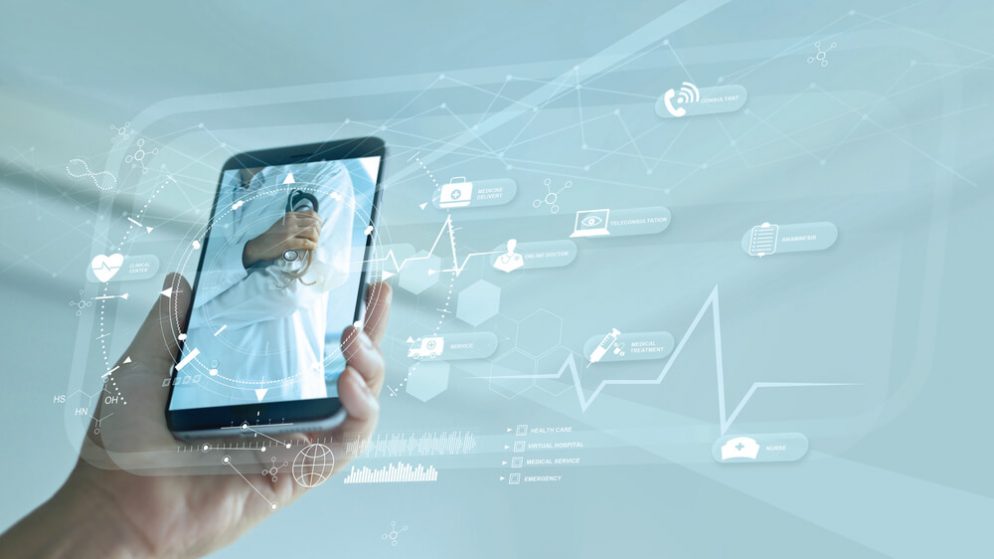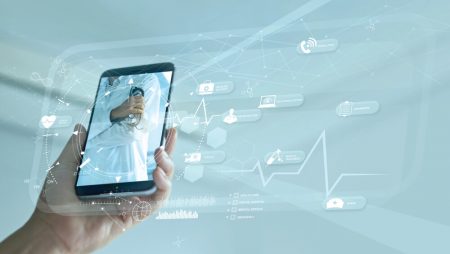



Get new exclusive access to healthcare business reports & breaking news




The Centers for Disease Control and Prevention (CDC) is seeking vendors to provide subscription-based licenses for digital health mobile applications that will be available to its employees. The move is aimed at promoting and ensuring a safe and healthy work environment while improving workers’ health and well-being.
In an RFI published on Friday, the CDC outlined its requirements for the app, which should offer meditation and mindfulness features tailored to specific government employee needs.
The app should also provide links to mindfulness-based self-help interventions, stress-reduction measures, activities for a robust active lifestyle, and guided meditation to enhance the physical health and mental well-being of the CDC employees.
The move by CDC to safeguard its workers’ health and overall well-being couldn’t have come sooner. A laundry list of studies, including a 2021 survey carried out by the American Psychological Association, shows that 59 percent of the U.S. workforce is affected by work-related stress, anxiety, and other related mental problems.
The same APA investigation discovered that the proportion of the workforce that want to ditch their current employer due to feeling stressed out or tense at work has increased threefold.
This is something that the Centers for Disease Control and Prevention wish to avoid by empowering its staff to prioritize their mental health and emotional well-being. Accordingly, the goal of building and making the app available at (and off) the workplace is for a stronger resistance to stress among CDC employees.
Together, the WorkLife Wellness Office, Security and Asset Management, and the Office of Safety at CDC issued the RFI to ensure a safe and healthy work environment. More than that, they jointly voiced their plan to focus on eight facets of health at the CDC.
Although physical, social, and emotional health take the front-burner, the office of Worklife Wellness emphasized that the app will also focus on the spiritual, occupational, intellectual, financial, and environmental health aspects. This holistic approach to health and wellbeing will ensure CDC employees alleviate work-related stress, improve performance, and focus on a mutually engaging & enabling workplace.
One survey, encompassing over 300 companies with around 800,000 employees, revealed that the number of staff members taking time off work due to mental-related issues like stress tripled between 1996 and 2000. It is estimated that approximately one million employees, ranging from teachers to first responders, are absent each day due to stress-related issues.
As noted by the European safety watchdog EU-OSHA, employees being tense, anxious or stressed out at the workplace are responsible for more than 50% of the over half a million work-days lost each year in the United States due to absenteeism. That translates to lost productivity, lost chances for direct collaboration, and diminished bottom line.
Additionally, one in every five last-minute absences is linked to job stress. This can have a severe impact, particularly if key employees like team leaders are affected, leading to disruptions in scheduled operations.
According to LA Time Magazine, unexpected absenteeism is estimated to cost American companies $602 per worker annually, with large organizations facing a potential cost of up to $3.5 million per year. Furthermore, a study by a large corporation over three years found that 60% of employee absences could be attributed to psychological problems resulting from job stress.
These findings underscore the significant impact that stress can have on employees and organizations, highlighting the need for proactive measures to address workplace stress and promote employee well-being.
As with CDC, it is imperative that other organizations – be they governmental, non-profit, or businesses – recognize the importance of fostering a positive work environment and taking appropriate steps to manage stress levels among their employees.
Jointly, the WorkLife Wellness Office, Security and Asset Management, and the Office of Safety at CDC are looking for a digital health mobile application that provides various features that are beneficial to the wellbeing and health of the agency’s employees.
More specifically, the digital app should sport both web and mobile capabilities. The agency specified that the application must be able to be whitelisted on the CDC website, allowing new users to sign up and access the enterprise subscription without much hassle.
One of the highlight features called for by the CDC in the applicatioN is an administrative dashboard, which will allow the system administrators to monitor the app’s usage, manage its content, and analyze data to track its effectiveness. The dashboard should be user-friendly, easy to navigate, and provide real-time reporting on the app’s usage.
At its core, the app should aggregate and disseminate meditation and mindfulness content. After all, the CDC is looking for an application that provides employees with access to mindfulness and meditation exercises, which can reduce stress levels and promote a healthier lifestyle. The app should include updated meditation and mindfulness content on a weekly basis, and it should be customizable, allowing users to tailor the content to their specific needs.
Webinar access is another feature that could make the app more user-friendly and viable in the long haul. It should have an in-built tool for mental health support webinars for CDC employees. The value of this feature will be absolute, especially when it comes to fostering engagement, sprucing up mindfulness exercises, and taking the usability of the app to the next level.
The CDC also calls for vendors that will aggregate reporting on many aspects of the app and user metrics. Essentially the app’s reporting feature will help admins in fine-tuning the application and check if employee engagement is in line with their mental health needs.
CDC has dictated that qualifying vendors must have a Federal Risk and Authorization Management Program (FedRAMP) approval if they are using a cloud solution. All FedRAMP-approved vendors and organizations must stick to a standardized approach for cloud-based services and applications that include continuous monitoring, secure authorization, and reliable assessment.
Moreover, the CDC is looking for vendors that have extensive experience working with organizations of the same size and complexity as the agency. Clearly, large software firms currently supporting other government agencies like the HHS, Department of State, and USDA will score better with the public health body. The preferred vendor candidate should be able to navigate that agency’s complex structure with ease to provide effective services to the CDC’s employees.
The CDC places a high priority on vendors with certified and trained personnel, who must be capable of providing uninterrupted support to CDC personnel around the clock.
This criteria is crucial because the digital health apps will be an important tool for employees to improve their health and wellbeing, and they will need to be able to access support at any time if they encounter issues with the apps.
On top of that, the preferred vendor should be able to track usage and generate actionable status & performance reports, along with carrying out performance evaluations and quality assurance. Team leaders must be able to join in on performance evaluation meetings, as well as craft strategic plans for supporting quality control, performance enhancement, and other critical performance needs.
Interested vendors must have the capability to provide teleconference and meeting support to the CDC’s WorkLife Wellness Office.
The duration of the performance period for this contract will be up to twelve months, commencing from the date of contract award. The period will comprise a base period of 12 months, followed by optional renewable periods of 4 years.
All interested parties are required to email their proposals to the contracting officer at the CDC on or before March 30, at precisely 2 pm Eastern Daylight Time